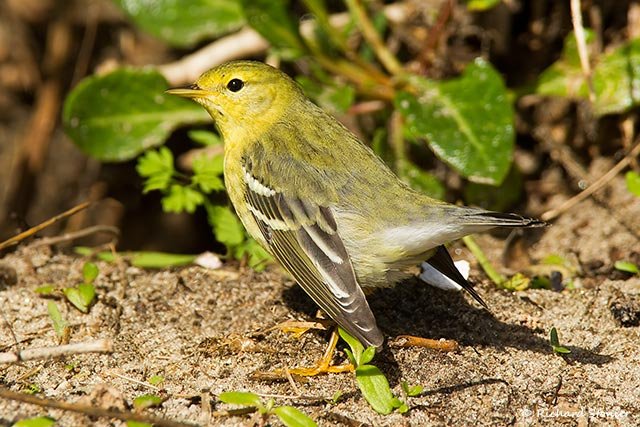It seems logical enough that bad weather can cause birds to become disoriented during their annual fall migration – causing them to end up in unfamiliar territory. But why, even if the weather is not a major factor, do birds travel far from their usual routes?
A new paper by UCLA ecologists explores one reason: disturbances in the Earth’s magnetic field can lead birds to wander — a phenomenon scientists call “vagrancy” — even in perfect weather , and especially during the fall transition. The research was published in Scientific Reports.
As bird populations continue to decline in North America, assessing the causes of vagrancy can help scientists better understand the threats birds face and the ways they adapt to those threats. . For example, birds that enter unfamiliar territory are likely to face challenges in finding food and habitats that suit them, and may die as a result. But it can also be beneficial for birds whose traditional homes are becoming uninhabitable due to climate change, by “accidentally” introducing animals into geographic regions that are now more suitable for theirs.
Blackpoll Warbler, copyright Richard Stonier, from surfbirds gallery
The Earth’s magnetic field, which runs between the North and South Poles, is generated by several factors, both above and below the planet’s surface. Decades’ worth of laboratory research suggests that birds sense magnetic fields using magnetoreceptors in their eyes. The new UCLA study lends support to the findings from an ecological perspective.
“There is increasing evidence that birds can actually detect geomagnetic fields,” said Morgan Tingley, the paper’s corresponding author and a UCLA associate professor of ecology and evolutionary biology. “In familiar places, birds can navigate by geography, but in some situations it’s easier to use geomagnetism.”
But the ability of birds to navigate using geomagnetic fields can be impaired when the magnetic fields are disturbed. Such disturbances can come from the sun’s magnetic field, for example, especially during periods of increased solar activity, such as sunspots and solar flares, but also from other sources.
“If the geomagnetic field experiences a disturbance, it’s like using a bad map that sends birds off course,” Tingley said.
Lead researcher Benjamin Tonelli, a UCLA doctoral student, collaborated with Tingley and postdoctoral researcher Casey Youngflesh to compare data from 2.2 million birds, representing 152 species, captured and released between 1960 and 2019. — part of a United States Geological Survey monitoring program — against historical records of geomagnetic disturbances and solar activity.
While other factors such as weather likely play a greater role in causing vagrancy, the researchers found a strong correlation between birds taken outside their expected range and geomagnetic disturbances that occurred in both fall and spring migration. But the relationship is particularly pronounced during the fall migration, the authors said.
Geomagnetic disturbances affected the navigation of both young birds and their adults, suggesting that birds rely on geomagnetism similarly regardless of their level of migration experience.
Researchers expect geomagnetic disturbances associated with increased solar activity to be associated with the most vagrancy. To their surprise, solar activity actually reduced the incidence of vagrancy. One possible reason is that the radiofrequency activity generated by solar disturbances may cause the birds’ magnetoreceptors to malfunction, leaving the birds to navigate by other cues instead.
“We think the combination of high solar activity and geomagnetic disturbance leads to either a pause in migration or a shift to other cues during the fall migration,” Tonelli said. “Interestingly, birds that migrate during the day are usually exceptions to this rule – they are more affected by solar activity.”
Although the researchers only studied birds, their methods and findings may help scientists understand why other migratory species, including whales, become disoriented or become stranded far from their usual territory. .
“This research was really inspired by whale strandings, and we hope that our work will help other scientists studying animal navigation,” Tingley said.
To make birding research more accessible to the public, Tonelli created a web-based tool that tracks geomagnetic conditions and predicts vagrancy in real time. The tracker is offline during the winter, but will be live again in the spring, when migration begins again.

Comments are closed, but trackbacks and pingbacks are open.